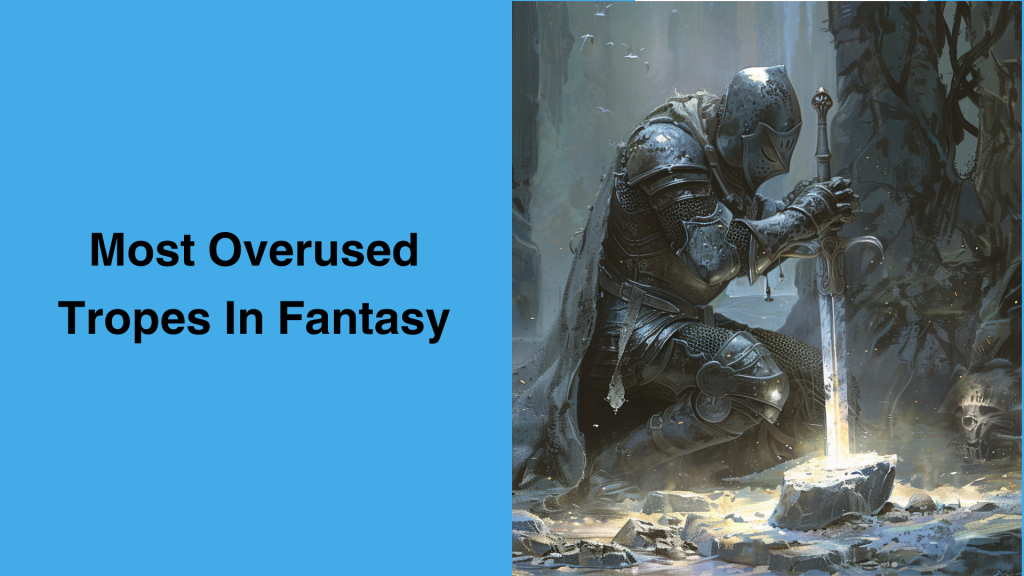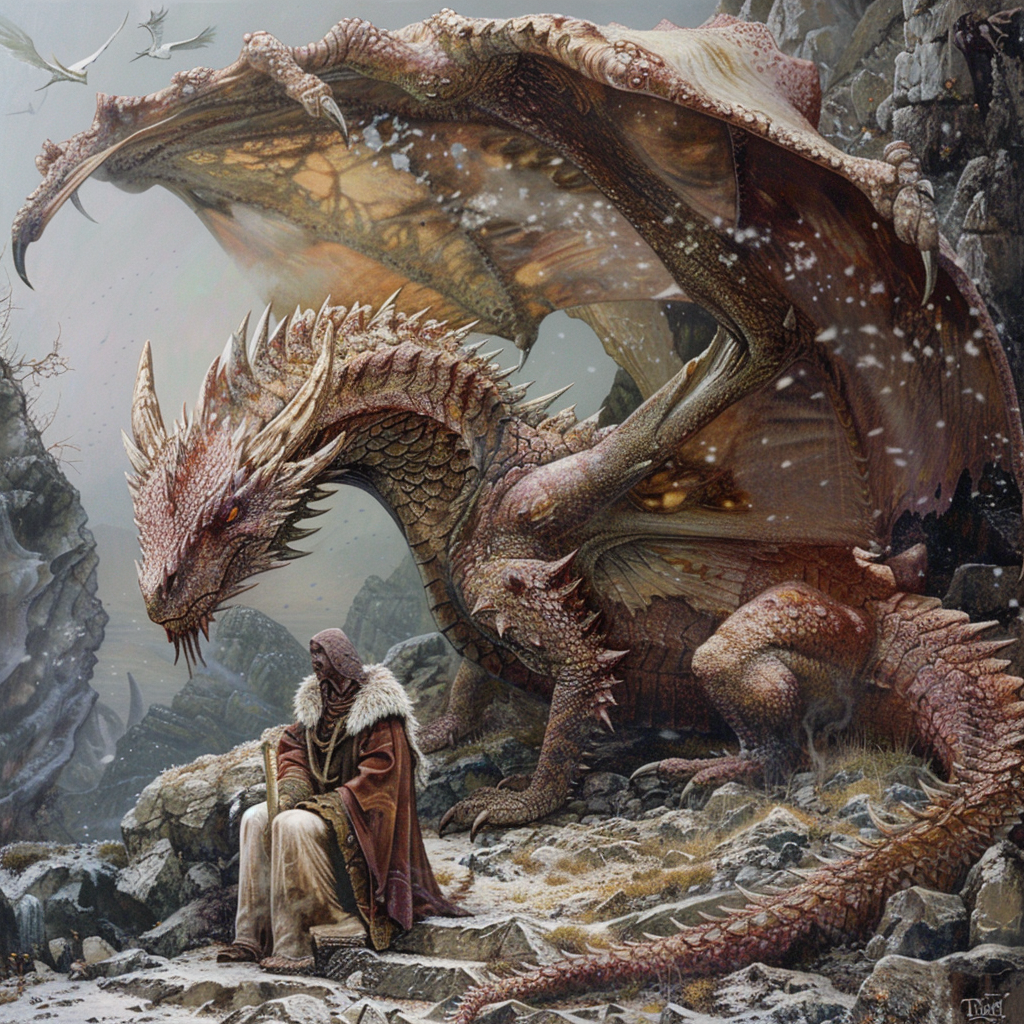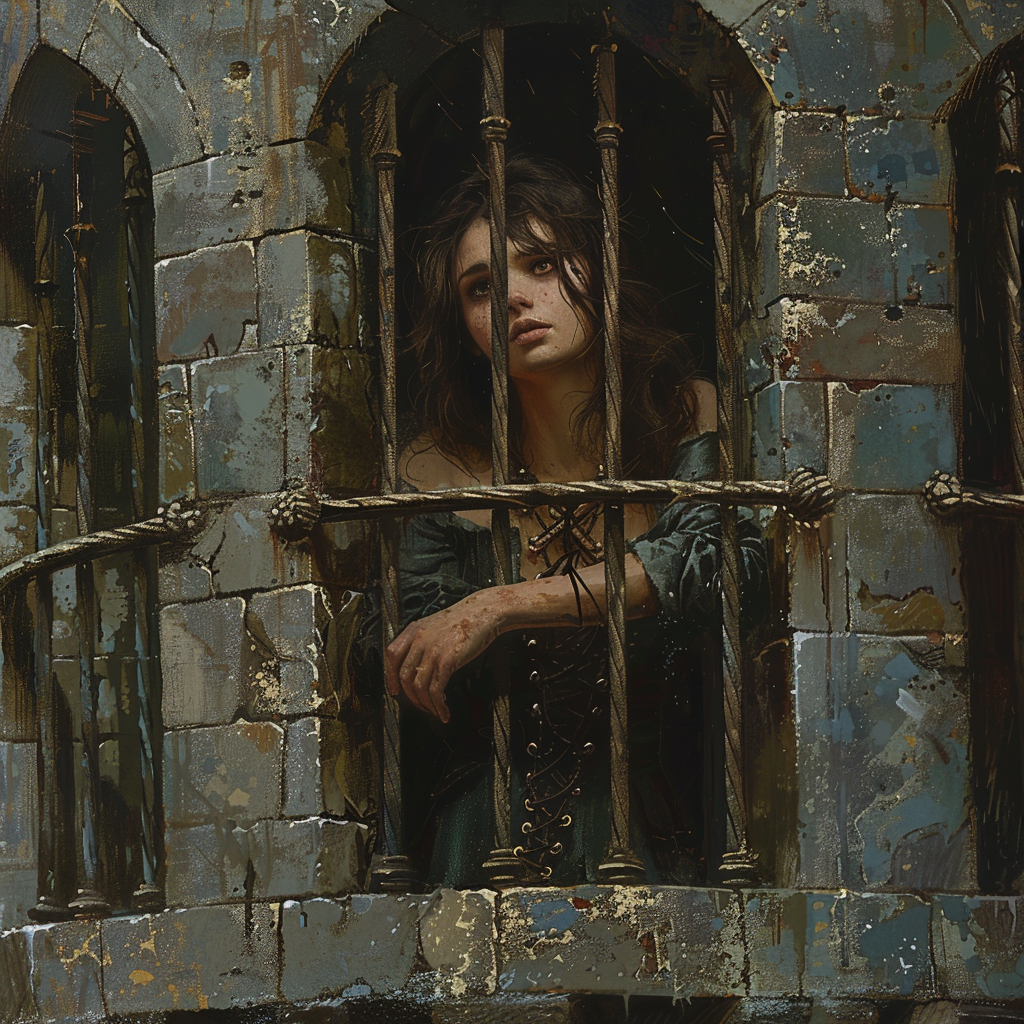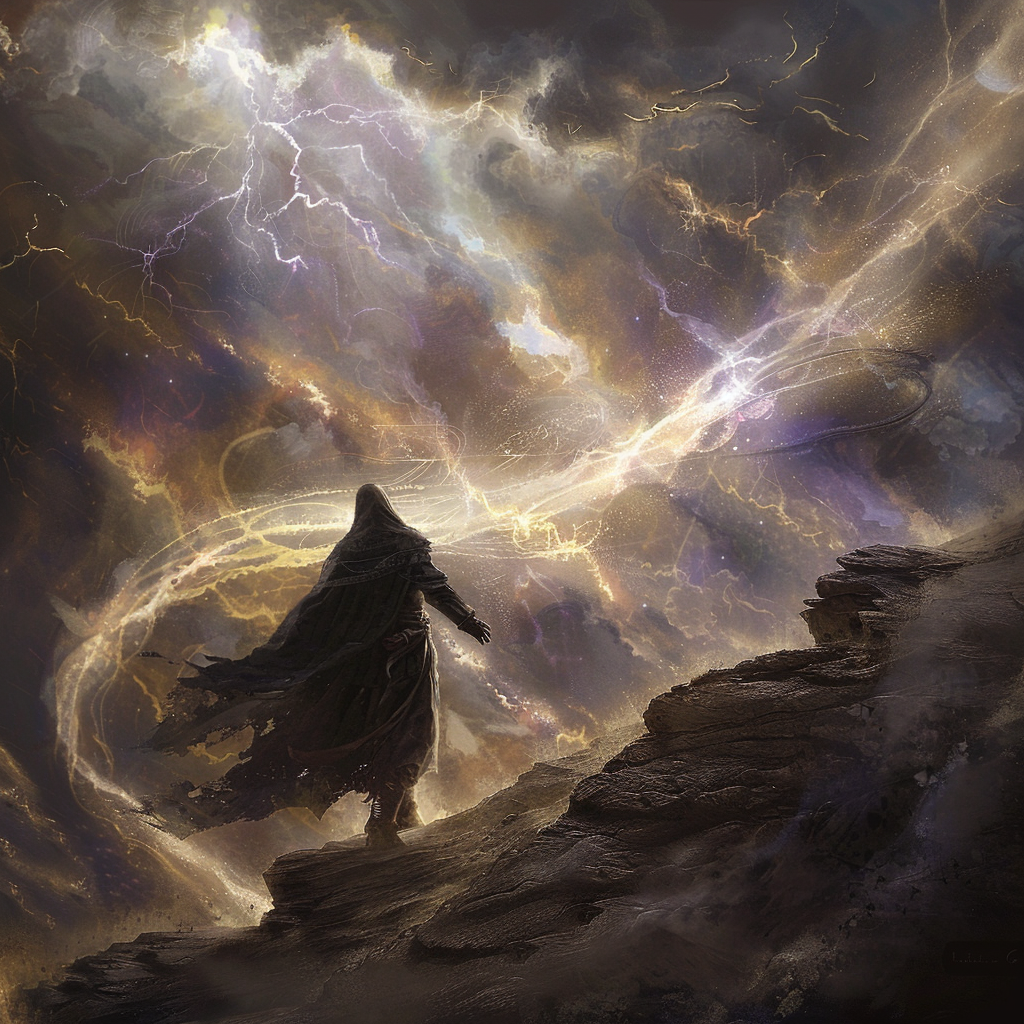Most Overused Fantasy Tropes – Top 10

Fantasy fiction has evolved quite a bit since the days of The Lord of the Rings. In modern times, it’s one of the broadest genres to write in. That said, many works still use the same old themes with little to no variation. Today, I’ll cover the 10 most overused fantasy tropes in fiction and what you can do to keep your stories fresh.
Beyond that, we’ll also look at some “case studies,” if you will, where authors have done a great job making their work stand out from the cliches we’ll cover. I’ll also provide some basic writing exercises to get you into the grove of thinking outside the box. And lastly, I’ll give you a list of resource recommendations you can follow up on to make your work fresh.
So, without further ado, let’s get into the most overused tropes in fantasy.
Table Of Contents
Top 10 Most Overused Fantasy Tropes
10. Magic Schools
The magic school trope – The main character attends some academy where they learn or hone magic powers. Often, they’ll have had some clue that they weren’t like everyone else, and suddenly, everything makes sense when they learn about their abilities. And it’s a safe bet that some popular, more talented practitioner takes issue with the new kid.
Shoutout to J.K. Rowling for putting the magic school trope on a worldwide scale. There are other works, like Ursula K. Le Guin’s “Earthsea” series, for example, that predate Rowling’s work. But Hogwarts and Harry Potter certainly put it in the spotlight.
9. Medieval Settings
To many, fantasy is synonymous with the medieval-inspired fantasy world. You’ve got castles, blacksmiths, kings & queens, combat with sword, shield, and bow, and lots of “mi’ lord” & “thou.” While you can undoubtedly be highly creative within these worlds, they’re almost inescapably ingrained in the genre.
If you’re a fantasy writer, don’t be afraid to explore modern-day settings where fantasy and magic exist within everyday life. There’s also steampunk and post-apocalyptic fantasy, which can feel fresh compared to a medieval setting and are no less fantasy.
8. Dragons
Subject matter and creatures from various mythology and folklore ultimately define the genre. However, of all the creatures available in all the world’s myths and lore, somehow, everyone lands on dragons. Are you writing fantasy? Why wouldn’t you add some dragons?

Granted, you can have dragons in your work and not be cliche; you must consider that you are drawing from a thoroughly visited well when you do. Depending on your world, consider things like werewolves, vampires, the fae, or best of all, creatures you’ve created. Don’t do dragons by default.
7. A Forbidden Love
The forbidden love trope isn’t the most beat-to-death one in the genre, but it can certainly be predictable if not well done. Mixing your fantasy with romance, horror, or comedy can be a break from the norm. However, star-crossed romances between different species or social classes can be a hard sell if you don’t have some good character development, storytelling, and other elements to genuinely invest readers.
6. The Wise Old Mentor
Next up, we have the wise old mentor trope. Every would-be hero needs a gray-bearded sage to dispense cryptic advice. These seemingly all-knowing mentors conveniently give crucial information piece by piece and come to the rescue with something they likely should have mentioned much earlier.
At their worst, these characters are often shallow, lack clear or realistic motivations for their actions, and don’t add much to the story beyond a convenient way to get particular info across to the reader. Of course, they can be done well, but make sure they’re good characters overall and not simply a means to an end.
5. The Magical Artifact
This one falls into a few sub-categories – There’s the “underwhelming character made interesting by their magic sword,” the “powerful trinket that doesn’t actually matter because it turns out, it was the journey that mattered all along!”
And perhaps the worst, the “plot-hole pendant,” which only works when the plot demands it. Need to escape from certain death? The pendant activates just in time, conveniently resolving any tension or conflict and creating an unsatisfying storytelling outcome.
To avoid the pitfalls that come along with this trope, develop the object’s powers and limitations in a way that adds depth and complexity to your narrative. By treating the thing as an integral part of your story rather than a convenient solution to problems, you can ensure that its presence feels meaningful and enriches the overall storytelling experience.
4. The Damsel In Distress
What’s more inspiring than a helpless princess waiting for her knight in shining armor? The main problem with this cliche is when the writer asks the reader to bite on the trope itself instead of developing the characters beforehand to where the reader legitimately cares about what’s happening.

There’s also the issue of the inevitable happy ending. Captivating your audience will be tough if they start to feel that despite the hardships and trials, the lady locked in the tower was never in danger.
If you use the rescue mission in your plot, develop your characters well. And don’t leave your “princess” helpless and useless. Even if they’re incapable of helping themselves with any success, you can be sure that someone in their shoes would still try to improve their situation with more than a “woe is me” and a devout confidence that their beloved will burst through the door any moment.
3. Unexpected Intervention
The divine intervention trope, also called the “Deus ex Machina,” is a get-out-of-jail-free card for many fantasy writers. Why bother with logical resolutions when you can have a sudden, improbable divine intervention instead?
His weapon is damaged, his resolve is waining, and countless enemies surround him. Your loveable character is about to meet his untimely demise, and nothing can save him. Unless? Yes, there it is, in the sky! Voila, the seemingly impossible becomes possible.
Unless you’re careful with what you define as possible for your world, these tricks can feel very cheap and unrealistic and undermine the tension you worked to create. If you want to use these tropes well, foreshadowing is your friend.
Planting subtle hints or clues throughout your story that lead to the eventual intervention helps make the resolution feel earned rather than arbitrary. This not only enhances the believability of the Deus ex Machina but also maintains the integrity of your storytelling by ensuring that the big moment is satisfying and earned.
2. The Dark Lord
You won’t find a list of the most overused fantasy tropes without this one – The Dark Lord. The dark lord is a cackling villain bent on world domination, often just for the love of evil. Don’t get me wrong, you need an antagonist and genuine conflict to drive your plot.
However, your bad guy should have some clear motivations to explain their actions. Give them some backstory, a goal they want to achieve, the reason they want it, and the means they’ll use to obtain it. Furthermore, consider giving them some redeemable qualities as well.
And if you do opt for the “bad to the core” villain without redeeming qualities, be sure to make them really dastardly. If you’re going to sell the epitome of evil idea, they’re going to have to do something more deplorable than burn the local village to the ground.
1. The Chosen One
Here we are, the number one most overused trope in fantasy, “The chosen one.” The protagonist is born with a mark or sign and foretold by an ancient prophecy, which designates them as the world’s savior. This prophecy is often vague and conveniently guides the protagonist through their journey without much struggle or personal growth.
This is often accompanied by an infallible morality, too. The chosen one is inherently good and morally righteous, without flaws or complexities to their character. They always make the right decisions and are never tempted by darkness or doubt. This leads to a one-dimensional and predictable character arc.

Speaking of predictability, if the prophecy is overly specific, it can leave little room for interpretation or deviation from the expected outcome. This lack of ambiguity removes tension and suspense from the story, as readers already know exactly how events will unfold.
So, keep that in mind, have well-rounded, well-developed characters, and strike a balance between inevitable events and narrative twists.
Novels That Break Fantasy Cliches
As mentioned in the introduction, I want to showcase some novels that are unique in each of the often un-unique tropes we covered. While this is not an exhaustive list, I’ll provide one work per trope that I recommend you check out for a positive example.
“The Name of the Wind” by Patrick Rothfuss
- Trope: Magical School
While magic schools are a common trope, Rothfuss’s “The Name of the Wind” stands out for its detailed and immersive world-building. The University of Magic in Rothfuss’s story is rich with unique lore, complex characters, and a rigorous system of magic that adds depth and authenticity to the narrative. If you’re looking for magic school done right, look no further.
“The Lies of Locke Lamora” by Scott Lynch
- Trope: Medieval Setting
The Lies of Locke Lamora is set in the city of Camorr, a vibrant and gritty medieval-inspired world that feels fresh and original. Lynch’s meticulous attention to detail, intrigue, and political maneuvering elements bring new life into the classic medieval setting.
“Seraphina” by Rachel Hartman
- Trope: Dragons
How can dragons be unique, you ask? Seraphina offers a different take by exploring their integration into human society rather than portraying them as mere beasts. Hartman’s dragons possess complex personalities, cultural traditions, and political dynamics. In other words, the dragons are meaningful characters in the story.
“The Song of Achilles” by Madeline Miller
- Trope: Forbidden Love
“The Song of Achilles” is a phenomenal book highlighting how impactful the forbidden love story can be. It reimagines the challenging romance between Achilles and Patroclus from Greek mythology. Miller’s lyrical prose and nuanced portrayal of their relationship transcend typical romantic tropes, delving into themes of sacrifice, honor, and the human condition.
“The Eye of the World” by Robert Jordan
- Trope: The Wise Old Mentor
In “The Eye of the World,” Robert Jordan subverts the wise old mentor trope with the character of Moiraine Damodred. Moiraine is a powerful and enigmatic Aes Sedai who guides the young protagonists, but her motives and agenda remain mysterious, adding complexity to her role within the story.
“The Hobbit” by J.R.R. Tolkien
- Trope: The Magical Artifact
Tolkien’s “The Hobbit” features the Arkenstone, a legendary gemstone coveted by dwarves and central to the plot. The Arkenstone symbolizes greed, power, and the corrupting influence of material wealth, offering deeper thematic and symbolic resonance to the story. If you’ve never read The Hobbit, I highly recommend it.
“Uprooted” by Naomi Novik
- Trope: The Damsel In Distress
“Uprooted” avoids the cliches of the damsel in distress trope by featuring a resilient and resourceful protagonist, Agnieszka, who rescues her friend from captivity on her own terms. Novik’s female lead subverts the traditional dynamic as well.
“The Ocean at the End of the Lane” by Neil Gaiman
- Trope: Deus Ex Machina
In truth, Neil Gaiman’s “The Ocean at the End of the Lane” skillfully avoids resorting to deus ex machina moment more than it uses well. The book incorporates elements of magic with incredible realism to blur the lines between reality and fantasy.
At the same time, the narrative features incredibly fantastic elements. But by maintaining narrative coherence and thematic integrity throughout the story doesn’t need to “call on the angels,” so to speak. And avoiding relying on those moments is what you want to be doing most of the time.
“The Broken Earth” trilogy by N.K. Jemisin
- Trope: The Dark Lord
In the “Broken Earth” trilogy, N.K. Jemisin reimagines the concept of the Dark Lord by blurring traditional notions of good and evil. The antagonistic force, “the Guardians,” is a complex and morally ambiguous threat rooted in societal oppression and injustice. Evil? Perhaps. One dimensional? Not at all! And that’s the goal.
“Mistborn: The Final Empire” by Brandon Sanderson
- Trope: The Chosen One
Brandon Sanderson’s “Mistborn” series introduces Vin, a reluctant chosen one with a mix of magical abilities. Rather than fulfilling a preordained destiny, Vin’s journey puts them on a path of personal growth and self-discovery that so many “chosen ones” lack.
Writing Exercises
As promised, here are some exercises that you can do to help you improve at breaking the mold on classic, overused fantasy tropes. They also encourage general creativity, critical thinking, and innovation in your writing.
Creative Writing Prompts
- Non-traditional Dragon Tropes: Write a story where the dragon is not a fearsome antagonist but a misunderstood creature seeking friendship.
- Original world-building: Create a fantasy setting inspired by a non-Western culture, incorporating unique mythology, traditions, and landscapes.
- A reluctant hero: Write a story where the protagonist is thrust into the hero role against their will. Explore their journey of self-discovery and resistance against destiny as they navigate a world filled with challenges, allies, and enemies.
- The Unconventional Quest: Craft a tale where the quest for a legendary artifact takes an unexpected turn, leading the characters on a journey through the depths of their own subconscious minds. Challenge traditional notions of heroism and success as they redefine their goals and motivations.
- A Living Landscape: Imagine a world where the landscape itself is alive, with sentient forests, talking mountains, and oceans that hold ancient wisdom. Write a story where characters must navigate this dynamic environment, forging alliances with natural forces and confronting the consequences of human actions on the living world around them.
Character Building
Develop a protagonist who defies the typical traits of “The Chosen One.” Focus on creating a character with flaws, doubts, and unconventional strengths. Then, challenge yourself to make a mentor character who challenges the stereotype of “The Wise Old Mentor” by giving them a complex backstory, personal struggles, and a unique approach to teaching.
Plot Development
Outline a plot that subverts expectations related to “The Dark Lord” trope. Consider alternative sources of conflict and resolution that don’t rely on a traditional evil antagonist. Then, write a synopsis for the story where a magical artifact is not the ultimate solution to the conflict but instead serves as a red herring or catalyst for character development.
Setting Exploration
Describe a fantasy world that breaks away from the medieval setting, incorporating elements of modern technology, alternative histories, or diverse cultural influences.
In a separate exercise, create a scene set in a magic school that challenges you to avoid the conventions of the trope by portraying students and teachers with unique abilities, motivations, and conflicts.
Dialogue Practice
Write a dialogue exchange between characters involved in a forbidden love, focusing on communication barriers, societal pressures, and the complexity of their relationship.
Then, experiment with dialogue that defies expectations for characters associated with “The Damsel in Distress” trope, giving agency, wit, and resilience to traditionally passive roles.
Conflict Resolution
Develop a resolution scene where the protagonist rejects the role of “The Chosen One” and instead relies on teamwork, strategy, or unconventional methods to overcome obstacles.
Revision And Editing
Revise a scene to add layers of mystery, limitations, or unintended consequences to a mystical item’s powers.
Then, review and edit dialogue exchanges to remove clichés and stereotypes associated with fantasy tropes, focusing on authentic character voices, natural flow, and meaningful subtext.
Further Reading And Resources
If you’re looking for more info on writing good fantasy novels and escaping traps like the above tropes, here are some other things you can check out.